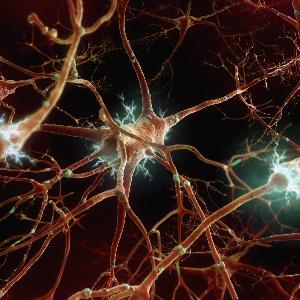Breathing: the master clock of the sleeping brain
24 Jan 2022
LMU neuroscientists have shown that breathing coordinates neuronal activity throughout the brain while sleeping and resting.
24 Jan 2022
LMU neuroscientists have shown that breathing coordinates neuronal activity throughout the brain while sleeping and resting.

© IMAGO / Ikon Images / Ian Cuming
While we sleep, the brain is not switched off, but is busy with “saving” the important memories of the day. To do this, brain regions are synchronized to coordinate the transmission of information between them. Yet, the mechanisms that enable this synchronization across multiple remote brain regions are poorly understood. Traditionally, these mechanisms were sought in correlated activity patterns within the brain. However, LMU neuroscientists Prof. Anton Sirota and Dr. Nikolas Karalis have now been able to show that breathing acts as a pacemaker that entrains the various brain regions and synchronizes them with each other.
Breathing is the most constant, enduring, and essential bodily rhythm and exerts a strong physiological effect on the autonomous nervous system. It is also known to modulate a wide range of cognitive functions such as perception, attention, and thought structure. However, the mechanisms of its impact on cognitive function and the brain are largely unknown.
The scientists carried out large-scale in vivo electrophysiological recordings in mice, from thousands of neurons across the limbic system. They showed that respiration entrains and coordinates neuronal activity in all investigated brain regions - including the hippocampus, medial prefrontal and visual cortex, thalamus, amygdala, and nucleus accumbens - by modulating the excitability of these circuits in a way that is independent of olfaction. “Thus, we were able to prove the existence of a novel non-olfactory, intracerebral, mechanism that accounts for the entrainment of distributed circuits by breathing, which we termed “respiratory corollary discharge”, says Karalis, who is currently research fellow at the Friedrich Miescher Institute for Biomedical Research in Basel. “Our findings identify the existence of a previously unknown link between respiratory and limbic circuits and are a departure from the standard belief that breathing modulates brain activity via the nose-olfactory route”, emphasizes Sirota.
This mechanism mediates the coordination of sleep-related activity in these brain regions, which is essential for memory consolidation and provides the means for the co-modulation of the cortico-hippocampal circuits synchronous dynamics. According to the authors, these results represent a major step forward and provide the foundation for new mechanistic theories, that incorporate the respiratory rhythm as a fundamental mechanism underlying the communication of distributed systems during memory consolidation.
Nikolaos Karalis, Anton Sirota: Breathing coordinates cortico-hippocampal dynamics in mice during offline states. Nature Communications 2022